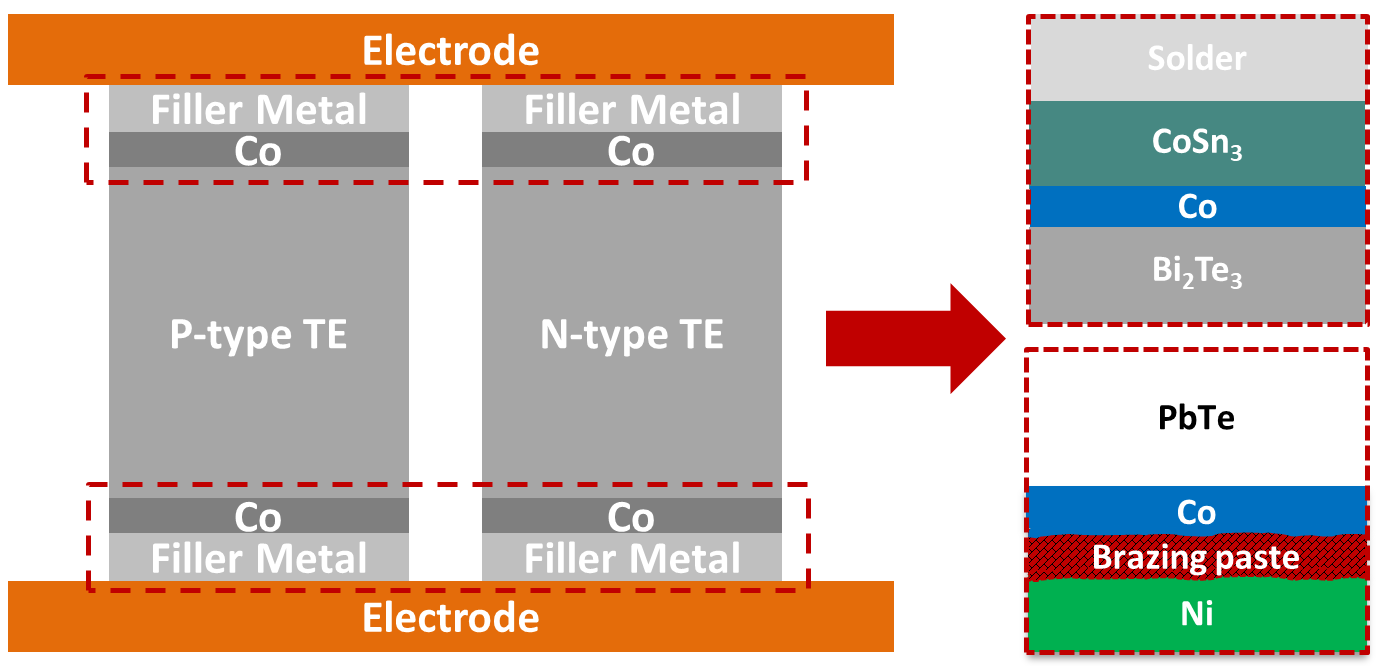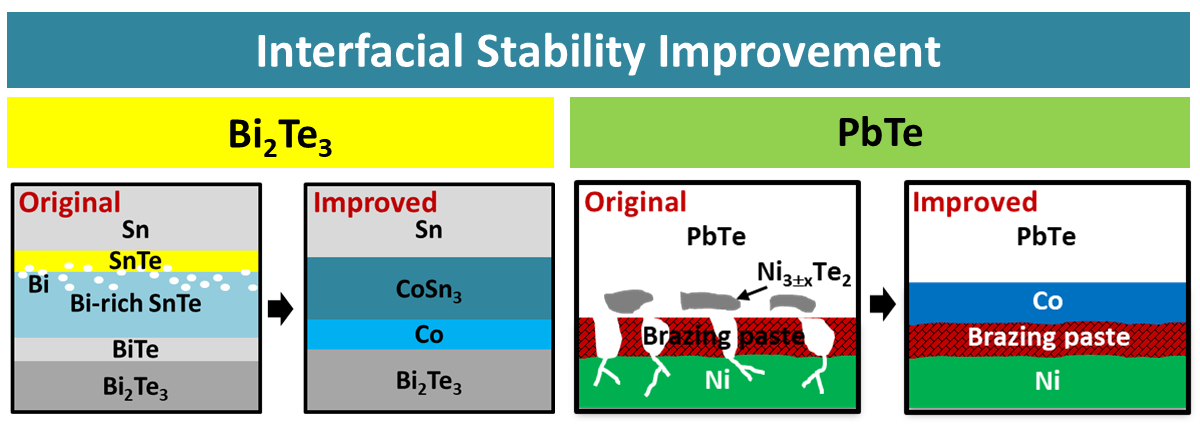| Technical Name | High reliability thermoelectric modules | ||
|---|---|---|---|
| Project Operator | National Central University | ||
| Project Host | 吳子嘉 | ||
| Summary | Thermoelectric module plays an important role for green energy. This technique develops Co as the key material that can be applied in a thermoelectric module for enhancing the reliability. Electroless plating is a well-adopted method for industries to deposit films. A severe interdiffusion that would cause formation of IMCs could occur if the joints did not involve an electroless Co layer. Significant growth of the compound drastically degrades the interfacial stability. The Co layer introduced in this technique profoundly inhibits the growth of brittle reaction phase. Decreasing the brittle phase results in absorbing the impact energy and increasing the joint strength. Minimizing the reaction layer thickness also causes less increase of contact resistance. Most importantly, the deposition of Co layer did not cause obvious degradation in TE performance. These results suggest that electroless Co diffusion barrier indeed is suitable for developing high reliability thermoelectric devices. |
||
| Scientific Breakthrough | This technology focuses on the development of high-reliability thermoelectric modules. In Bi2Te3 thermoelectric modules, the addition of electroless Co layer blocks the interface reaction between the thermoelectric materials and the tin solder. It inhibits the formation of brittle SnTe intermetallic compound and successfully improves the mechanical properties up to 700 %. In addition, there is no obvious degradation in contact resistance and thermoelectric properties. Highest zT value can reach 1.4. In PbTe thermoelectric modules, the addition of Co layer inhibits the interface reaction between the thermoelectric materials and the electrodes. It successfully improves the mechanical properties and greatly increases the thermoelectric properties. |
||
| Industrial Applicability | This technology can be applied on cutting-edge thermoelectric modules by using an electroless plating Co diffusion barrier. The addition of the layer successfully improves the vigorous interface reaction between thermoelectric bulk and metal electrodes. Stable interface further enhances the joint strength. There is no degradation on contact resistance and thermoelectric performance after long-term aging, which is a critical operation concerns for the applications of thermoelectric module. Through systematic research of the architecture of the thermoelectric modules and investigation of new materials, the technology provides a promising approach to develop devices that will play an important role in green technology. |
||
| Keyword | Thermoelectric materials Thermoelectric modules Diffusion barrier Electroless plating Mechanical strength Bismuth Telluride Cobalt Soldering Brazing | ||
- atwu@ncu.edu.tw
other people also saw







